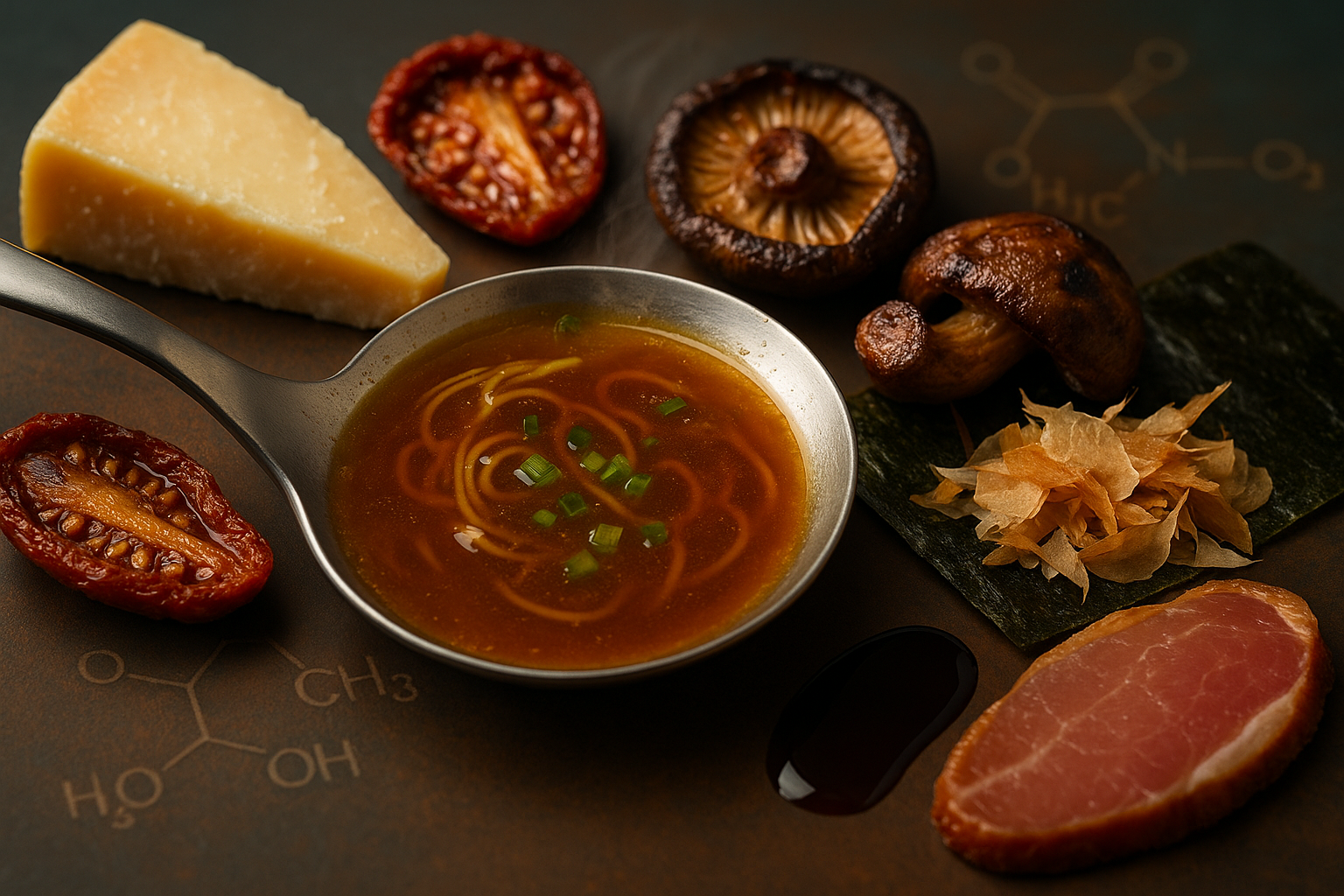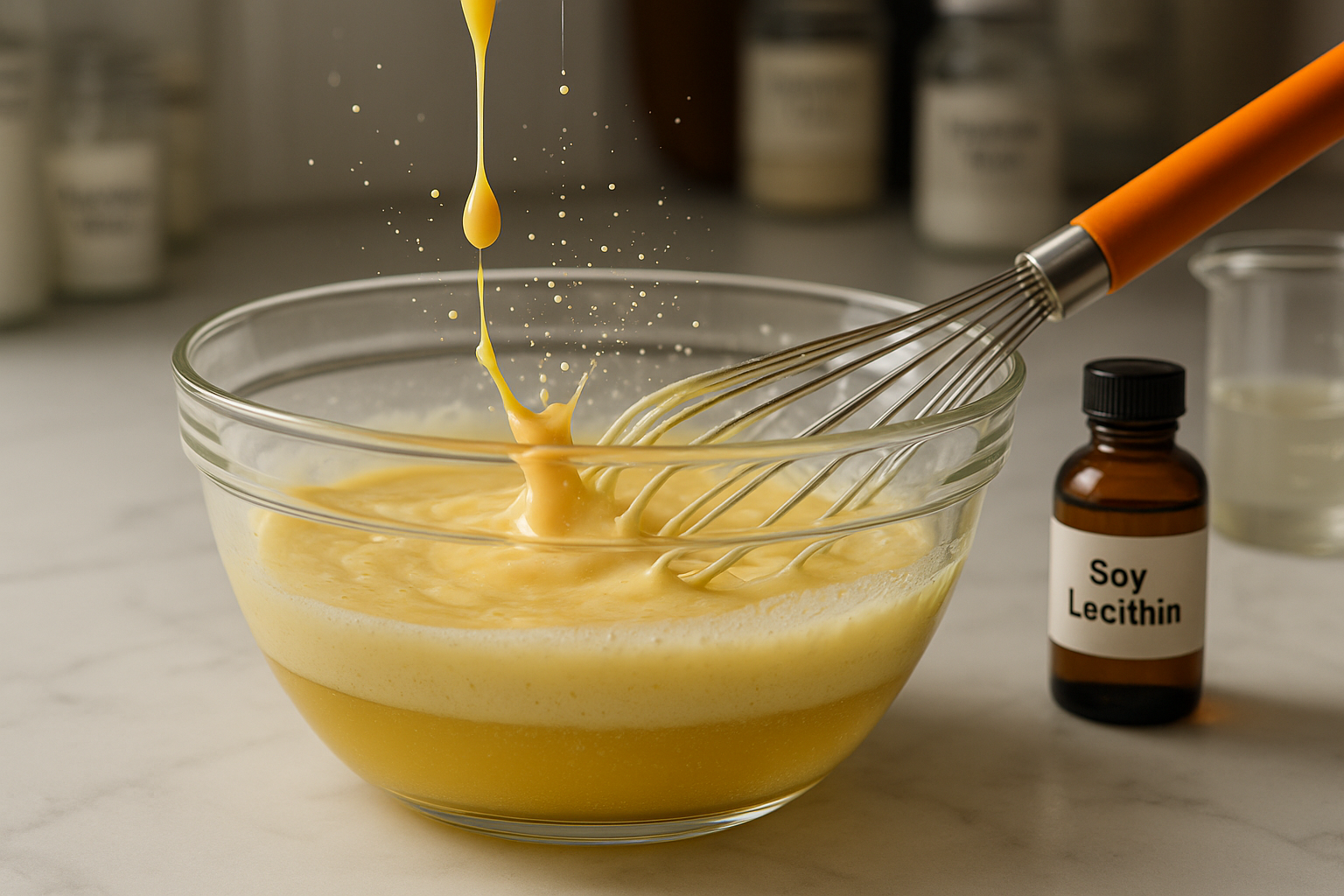
How to Use Xanthan Gum: Tips for Gluten-Free and Everyday Cooking
SUBSCRIBE TO OUR BLOG
Promotions, new products, and recipes.
What you'll learn:
-
What xanthan gum is and how it’s made, including its origin from Xanthomonas campestris bacteria.
-
Why xanthan gum is essential in gluten-free baking, and how it helps replicate the structure and elasticity of gluten.
-
How to measure and mix xanthan gum correctly to achieve the best texture in baked goods without making them gummy.
-
Different culinary uses beyond baking, such as thickening sauces, stabilizing salad dressings, and creating foams for drinks.
-
Storage, health considerations, and possible alternatives to xanthan gum for various dietary needs.
Have you ever wondered how to use xanthan gum in your kitchen? This versatile ingredient, often recognized as a common food additive, is a staple in both gluten-free baking and general cooking. Whether you're whipping up a salad dressing or perfecting a batch of gluten-free cookies, xanthan gum can help improve texture and stability in a wide range of recipes.
From thickening sauces to acting as a binding agent in baked goods, xanthan gum serves many purposes in the culinary world. In this guide, we’ll explore its origins, health benefits, and practical uses to help you get the best results in your cooking and baking endeavors.
What Is Xanthan Gum and Why Is It Widely Used?
The Origin and Purpose of Xanthan Gum
Xanthan gum is a white powder derived from a type of bacteria known as xanthomonas campestris. This bacterium ferments sugars to produce a substance that is later dried and processed into xanthan gum powder. As a result, it has become a common ingredient in the food industry and is widely used in various food products.
Its primary purpose as a common food additive is to improve the texture, consistency, and shelf life of foods. In gluten-free foods, xanthan gum helps replicate the elasticity and structure that gluten provides in traditional baking. It is this unique ability that makes it a key ingredient in gluten-free cooking and baking.
Health Benefits and Applications
One of the most notable benefits of xanthan gum is its support for gluten-free cooking and baking. For individuals with gluten sensitivity or celiac disease, xanthan gum serves as a critical component in creating gluten-free baked goods that still have a desirable texture and structure. Its use in gluten-free recipes ensures that baked items like bread, cakes, and cookies don’t crumble apart.
Beyond gluten-free baking, xanthan gum also has applications for individuals with specific health needs. For example, it works as a saliva substitute for those dealing with dry mouth, often providing relief for individuals who experience this condition. Additionally, its use as a thickener in low-carb and gluten-free recipes makes it popular among those following specialized diets.
How to Use Xanthan Gum in Gluten-Free Baking
Measuring the Right Amount of Xanthan Gum
To achieve success in gluten-free baking, it’s essential to measure the right amount of xanthan gum. As a general rule, you should use one teaspoon of xanthan gum per cup of gluten-free flour in your recipe. This small amount is usually sufficient to bind the ingredients together and provide the desired elasticity.
It’s important to note that a little bit of xanthan gum goes a long way. Using too much xanthan gum can negatively affect the texture of your baked goods, making them overly gummy or dense. To avoid this, always stick to the recommended measurements for the type of recipe you are preparing.
Mixing Xanthan Gum with Dry Ingredients
For the best results in gluten-free baking, xanthan gum should be mixed with dry ingredients like gluten-free flour. This ensures even distribution throughout the mixture, which is essential for creating an even texture in your final product. Skipping this step can lead to clumping or uneven binding, which might ruin the consistency of your baked goods.
By combining xanthan gum with the dry ingredients beforehand, you enhance its ability to act as a binding agent. This is particularly important in recipes like cakes, muffins, and cookies, where a uniform structure is crucial for both appearance and taste.
Best Practices for Baking
Incorporating xanthan gum into your gluten-free baking routine can elevate your recipes to the next level. For example, adding xanthan gum to pizza crust recipes enhances the elasticity and makes the dough easier to work with. Similarly, in cakes, muffins, and cookies, xanthan gum improves the structure and helps prevent crumbling.
Another advantage of xanthan gum is its ability to act as a substitute for egg white in certain recipes. This makes it a great option for vegan baking or for those with egg allergies. Simply use the appropriate amount of xanthan gum to achieve the desired consistency in your batter or dough.
Other Uses of Xanthan Gum in Cooking and Drinks
Thickening Sauces and Salad Dressings
Xanthan gum is highly effective in thickening sauces and salad dressings, making it a valuable addition to home kitchens. To create a thicker sauce, blend xanthan gum with cold water before adding it to your dish. This step prevents clumping and ensures a smooth consistency.
For salad dressings, xanthan gum pairs well with ingredients like olive oil or soymilk to achieve a creamy texture. Using an immersion blender can help mix the xanthan gum evenly, ensuring that your dressing is perfectly smooth without any lumps. This technique is a great way to elevate the quality of your homemade dressings.
Creating Xanthan Gum Foam
One of the more creative applications of xanthan gum is in making xanthan gum foam for specialty drinks or cocktails. By combining xanthan gum powder with a cold liquid and blending, you can produce air bubbles that create a light and airy foam. This technique is often used in modern gastronomy to enhance the presentation and mouthfeel of drinks.
Whether you’re preparing a unique cocktail or experimenting with new culinary techniques, xanthan gum foam offers an innovative way to impress guests and add a touch of sophistication to your creations.
Comparing Xanthan Gum to Other Thickening Agents
Alternatives to Xanthan Gum
While xanthan gum is a popular thickening agent, there are several alternatives available for those who may want to experiment with other options or avoid xanthan gum due to dietary preferences. Guar gum and locust bean gum are plant-based options that are often used in similar ways, particularly in gluten-free recipes. These alternatives can provide a comparable binding effect, though the texture and taste may vary slightly.
For recipes requiring a thicker sauce, potato starch or cornstarch are effective options. These starches are widely available and work well in soups, gravies, and sauces. Additionally, flax seed and chia seeds are excellent binding agents that offer a more natural, fiber-rich alternative for recipes like baked goods or vegan dishes.
Why Xanthan Gum Stands Out
Despite the variety of alternatives, xanthan gum remains a preferred choice for many chefs and home cooks due to its versatility and reliability. One of its standout features is its long shelf life, which ensures that the product remains usable for extended periods when stored properly in a cool, dry place. Its consistent results in both gluten-free and traditional recipes make it a trusted ingredient in kitchens worldwide.
Additionally, xanthan gum is suitable for a wide range of gluten-free recipes and is highly effective in small amounts. Its ability to deliver even texture and enhance the mouthfeel of both savory and sweet dishes further sets it apart from other options. Whether you are preparing baked goods, sauces, or drinks, xanthan gum offers unparalleled flexibility and quality.
Tips for Safe Use and Addressing Concerns
When using xanthan gum, it’s important to start with a small amount and adjust based on the recipe’s requirements. Using too much xanthan gum can lead to a gummy or overly thick texture, which might not be ideal for your dish. By measuring carefully and evaluating the effect of xanthan gum in your recipes, you can achieve the desired consistency without compromising taste or texture.
Proper storage is also essential for maintaining the quality and shelf life of xanthan gum. Keep it in a cool, dry place away from moisture to prevent clumping and degradation. This ensures that your xanthan gum powder remains fresh and effective for future use in various recipes.
While xanthan gum is generally safe for most people, some individuals may experience mild side effects, such as digestive tract discomfort, if consumed in large amounts. If you are new to using xanthan gum or have specific dietary concerns, it’s always a good idea to consult with a healthcare provider or dietitian. This is especially true for individuals with food allergies or sensitivities to common food additives.
Where to Find More Resources and Recipes
For those interested in expanding their culinary repertoire, there are plenty of online resources offering free recipes and gluten-free cooking tips. Websites like capeccrystalbrands.com provide a wide selection of gluten-free recipes and other baking ingredients that work seamlessly with xanthan gum. These platforms are great for discovering new ways to incorporate xanthan gum into your cooking.
You can also explore recent posts on gluten-free foods and baking tips to stay updated on the latest trends and techniques. Many external websites use tracking tools to suggest recipes, baking ideas, and innovative ways to use xanthan gum. Whether you’re a beginner or an experienced gluten-free baker, these resources are invaluable for improving your skills.
Be mindful of ad experience and the use of cookies while browsing online resources. Many websites offer tools for gluten-free cooking and baking, but it’s important to prioritize trusted sources. With the right recipes and guidance, you’ll be well-equipped to create delicious dishes that highlight the benefits of xanthan gum.
Conclusion
Xanthan gum is a versatile and valuable ingredient that plays a key role in both gluten-free and everyday cooking. From improving texture in baked goods to thickening sauces and salad dressings, its uses are extensive and reliable. Whether you are working with gluten-free recipes or experimenting with specialty dishes, xanthan gum is a great way to enhance your culinary creations.
With proper measurement, mixing, and storage, xanthan gum delivers consistent results that elevate the quality of your food. By exploring more resources and recipes, you can continue to discover new ways to incorporate this common food additive into your cooking routine. Embrace the possibilities and enjoy the benefits of xanthan gum in your kitchen!
1. What is xanthan gum?
Xanthan gum is a natural thickener and stabilizer made by fermenting sugars with the bacterium Xanthomonas campestris. It’s commonly used to improve texture and consistency in food.
2. Why is xanthan gum important in gluten-free baking?
It helps mimic gluten’s binding and elastic qualities, preventing gluten-free baked goods from crumbling and improving their structure.
3. How much xanthan gum should I use in baking?
A general guideline is 1 teaspoon of xanthan gum per cup of gluten-free flour for most baked goods.
4. Can you use too much xanthan gum?
Yes. Excess xanthan gum can make food overly gummy or dense, so it’s best to follow recipe recommendations.
5. How should xanthan gum be added to recipes?
For best results, mix xanthan gum with dry ingredients like flour before combining with wet ingredients to ensure even distribution.
6. What are some uses of xanthan gum besides baking?
It’s used to thicken sauces, stabilize salad dressings, create foams in cocktails, and add creaminess to dairy-free recipes.
7. Is xanthan gum vegan and gluten-free?
Yes. It’s plant-based and naturally gluten-free, making it suitable for vegan and gluten-free diets.
8. What can I use instead of xanthan gum?
Alternatives include guar gum, locust bean gum, chia seeds, flax seeds, potato starch, or cornstarch, depending on the recipe.
9. Does xanthan gum have any health benefits or concerns?
It’s generally safe, but in large amounts may cause mild digestive discomfort in some individuals. It’s also used in medical nutrition for people with swallowing difficulties.
10. How should xanthan gum be stored?
Keep it in a cool, dry place in an airtight container to prevent clumping and maintain freshness.

|
About the Author Ed is the founder of Cape Crystal Brands, editor of the Beginner’s Guide to Hydrocolloids, and a passionate advocate for making food science accessible to all. Discover premium ingredients, expert resources, and free formulation tools at capecrystalbrands.com/tools. — Ed |
Enjoyed this post? Subscribe to The Crystal Scoop
Food-science tips, ingredient know-how, and recipes. No spam—unsubscribe anytime.
- Choosing a selection results in a full page refresh.



